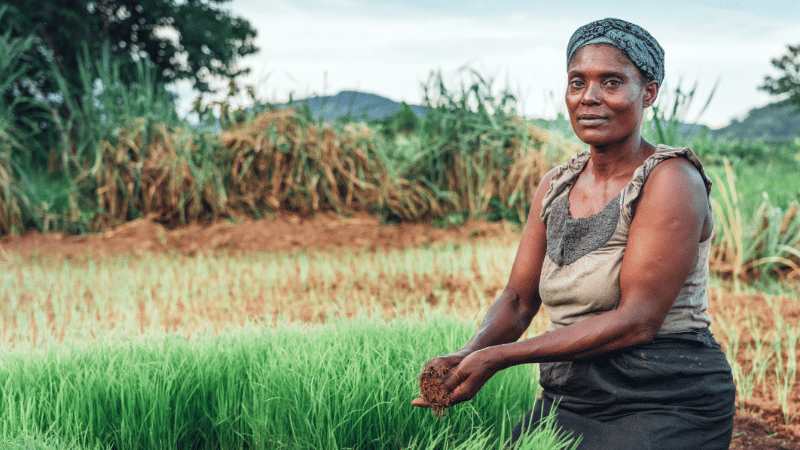Agriculture has been the backbone of Africa’s economy for centuries, providing livelihoods for millions and contributing significantly to the continent’s GDP. However, limited access to capital and resources has hindered the growth of the agricultural sector. In recent years, microfinancing programs have emerged as powerful tools to revolutionize farming practices in Africa, empowering farmers to access funds for improved equipment, irrigation, and training. These programs have led to increased productivity, enhanced food security, and, most importantly, improved the lives of countless farmers and their families.
The Challenges Faced by African Farmers
Agricultural practices in Africa have long been characterized by small-scale subsistence farming. Subsistence farmers in rural Uganda struggle to grow enough crops to feed their children or have surplus to sell at a local market for profit. This is often due to a lack of access to credit, inadequate infrastructure, and unpredictable weather conditions.
Additionally, the absence of modern equipment and technologies has posed significant challenges for farmers. This lack of tool and equipment has directly resulted in low yields and reduced productivity, perpetuating the cycle of poverty in rural communities. Poverty means daily hunger; child malnutrition; lack of access to clean water, shelter, and healthcare; little or no opportunity to go to school or learn a trade; constant fear for the future; and increased risk of exploitation and abuse.
The Rise of Microfinancing Programs
Microfinancing programs have gained prominence as viable solutions to bridge the financing gap for African farmers. Unlike traditional banks, microfinancing institutions focus on providing small loans, known as microloans, to marginalized communities, including small-scale farmers. These loans are typically used to purchase seeds, fertilizers, irrigation systems, and other necessary inputs, allowing farmers to enhance their productivity and income.
1. Access to Equipment
Microfinancing has made modern agricultural equipment accessible to small-scale farmers, revolutionizing their farming practices. With microloans, farmers can invest in tractors, harvesters, and other machinery, drastically reducing the time and effort required for various farming activities. As a result, farmers can cultivate larger areas, increase production efficiency, and cultivate high-value crops. This technological leap has not only improved their income but also transformed their approach to agriculture, turning it into a sustainable and profitable venture.
2. Investing in Efficient Irrigation
In many parts of Africa, unreliable rainfall patterns have been a major impediment to consistent crop production. Microfinancing programs have enabled farmers to invest in efficient irrigation systems, such as drip irrigation and solar-powered pumps. These systems mitigate the impact of weather fluctuations, providing a steady supply of water to crops throughout the year. As a consequence, farmers can diversify their crops, cultivate higher-value produce, and reduce the risk of crop failure during dry spells. This shift towards efficient irrigation has played a crucial role in enhancing food security, ensuring a stable income for farming families.
3. Focus on Training
Providing financial support is important,but a focus on capacity building and knowledge dissemination is what drives sustainability. Farmers can attend training workshops on sustainable agricultural practices, modern farming techniques, and market linkages. Microfinancing Partners in Africa’s Cow Program trains farmers to help each other in agricultural best practices. Equipped with this knowledge, they can optimize their resources, reduce waste, and maximize their yields. Additionally, these training programs empower farmers to explore alternative income sources. To learn more about the Cow Program, visit https://microfinancingafrica.org/programs/cow-program/.
4. Empowering Women
Microfinancing programs have had a transformative impact on women in agriculture. As a significant proportion of smallholder farmers in Africa are women, empowering them with financial resources and training has been instrumental in breaking gender barriers. Women have demonstrated exceptional entrepreneurial skills and have proven to be reliable borrowers, utilizing microloans to create thriving agricultural businesses. Empowering women in agriculture has broader social implications, as it enhances gender equality, reduces poverty, and leads to more inclusive and resilient communities.
Microfinancing solutions have emerged as a powerful catalyst for transforming farming practices in Africa. By providing farmers with access to funds for improved equipment, efficient irrigation systems, and valuable training, these programs have increased agricultural productivity and food security across the continent. Beyond economic gains, microfinancing has brought about social transformation by empowering women and creating more sustainable and resilient farming communities.

